Filter by
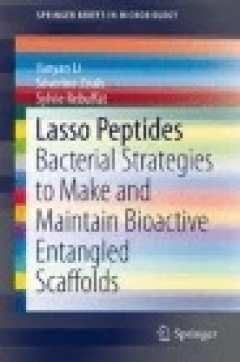
Lasso Peptides: Bacterial Strategies to Make and Maintain Bioactive Entangled…
Lasso peptides form a growing family of fascinating ribosomally-synthesized and post-translationally modified peptides produced by bacteria. They contain 15 to 24 residues and share a unique interlocked topology that involves an N-terminal 7 to 9-residue macrolactam ring where the C-terminal tail is threaded and irreversibly trapped. The ring results from the condensation of the N-terminal amin…
- Edition
- -
- ISBN/ISSN
- 978-1-4939-1010-6
- Collation
- -
- Series Title
- -
- Call Number
- -
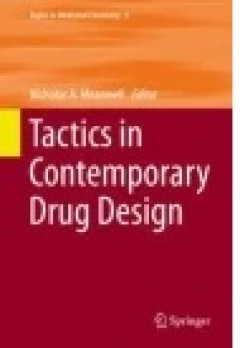
Tactics in Contemporary Drug Design
Medicinal chemistry is both science and art. The science of medicinal chemistry offers mankind one of its best hopes for improving the quality of life. The art of medicinal chemistry continues to challenge its practitioners with the need for both intuition and experience to discover new drugs. Hence sharing the experience of drug research is uniquely beneficial to the field of medicinal chemist…
- Edition
- -
- ISBN/ISSN
- 978-3-642-55041-6
- Collation
- XII, 394
- Series Title
- Topics in Medicinal Chemistry
- Call Number
- -

Modeling in Biopharmaceutics, Pharmacokinetics and Pharmacodynamics
The state of the art in Biopharmaceutics, Pharmacokinetics, and Pharmacodynamics Modeling is presented in this new second edition book. It shows how advanced physical and mathematical methods can expand classical models in order to cover heterogeneous drug-biological processes and therapeutic effects in the body. The book is divided into four parts; the first deals with the fundamental princ…
- Edition
- 2
- ISBN/ISSN
- 978-3-319-27596-3
- Collation
- XXII, 483
- Series Title
- Interdisciplinary Applied Mathematics
- Call Number
- -

Basic and Clinical Toxicology of Mustard Compounds
This book offers a practical guide to the clinical management of sulphur and nitrogen mustard exposure including information on the history, pharmacology and toxicology of mustard compounds (MC). Basic and Clinical Toxicology of Mustard Compounds details the many resulting complications of sulphur mustard (SM) poisoning such as respiratory, Dermatological, Ophthalmological and Psychiatric. …
- Edition
- -
- ISBN/ISSN
- Springer Cham
- Collation
- -
- Series Title
- -
- Call Number
- 615.4

Translational Toxicology
Bringing together a distinguished interdisciplinary team of contributors, this volume provides a comprehensive exploration of translational toxicology—a systematic approach to developing therapeutic interventions that can protect against, mitigate, or reverse the effects of exposures. In particular, the book addresses modes of action and biomarkers, developmental risks of exposures, and poten…
- Edition
- 1
- ISBN/ISSN
- 978-3-319-27449-2
- Collation
- XV, 380
- Series Title
- Molecular and Integrative Toxicology
- Call Number
- -
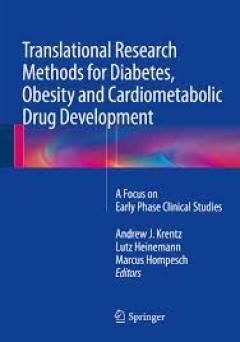
Translational Research Methods for Diabetes, Obesity and Cardiometabolic Drug…
The world is beset by a pandemic of obesity and type 2 diabetes and the need for new drugs is startlingly clear; recent years have seen a huge increase in research activity to fill this gap. The development of new drugs for diabetes and obesity must be founded upon a sound appreciation of the pathophysiology of these common disorders. The dual defects of insulin resistance and impaired insulin …
- Edition
- 1
- ISBN/ISSN
- 978-1-4471-7032-7
- Collation
- XII, 312
- Series Title
- -
- Call Number
- -
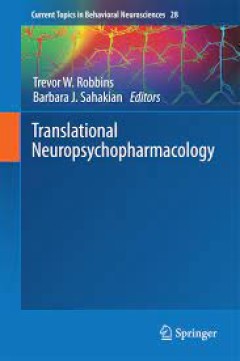
Translational Neuropsychopharmacology
This book covers wide areas of animal and human psychopharmacology with clinical utility in the treatment of psychiatric and neurological (e.g Alzheimer's disease) disorders. The main theme is to develop a new paradigm for drug discovery that questions the claim that animal models or assays fail adequately to predict Phase 3 clinical trials. A new paradigm is advocated that stresses the importa…
- Edition
- 1
- ISBN/ISSN
- 978-3-319-33911-5
- Collation
- XII, 498
- Series Title
- Current Topics in Behavioral Neurosciences
- Call Number
- -
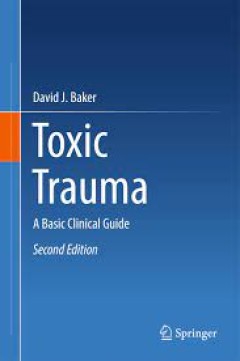
Toxic Trauma
Winner of BMA Medical Book Award, Highly Commended in Public Health Written for medical professionals, this book provides a concise reference with clear guidelines on how to manage both the victims of chemical agent exposure and the site of the incident. David Baker considers the nature and basic science of the hazards faced as well as the practical management of persons exposed to chemicals a…
- Edition
- 2
- ISBN/ISSN
- 978-3-319-40916-0
- Collation
- XXIII, 238
- Series Title
- -
- Call Number
- -
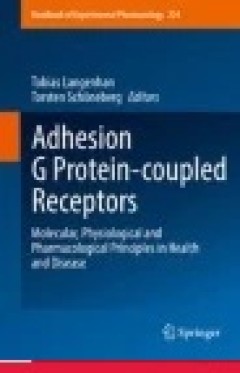
Adhesion G Protein-coupled Receptors: Molecular, Physiological and Pharmacolo…
Latest research on Adhesion GPCRs has unearthed surprising revelations about the events that govern the signal transduction of these receptor molecules and the cellular and organ requirements for these signals. Unexpected and unprecedented findings suggest that Adhesion GPCRs constitute a group of receptors that sense mechanical stimuli and transcode them into metabotropic signals through the a…
- Edition
- Ed. 1
- ISBN/ISSN
- 978-3-319-41523-9
- Collation
- XIV, 403
- Series Title
- Handbook of Experimental Pharmacology
- Call Number
- 615 ADH a
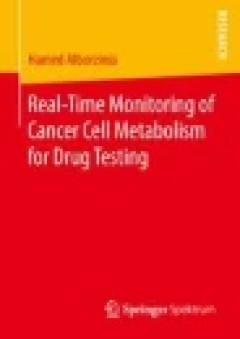
Real-Time Monitoring of Cancer Cell Metabolism for Drug Testing
Hamed Alborzinia uses the biosensor chip to monitor the metabolic and morphological changes in cancer cell lines in real time, particularly: (i) real-time measurements of basic cancer cell metabolism of different cancer cell lines; (ii) a detailed timeline of the metabolic response to cisplatin treatment and clear detection of the time span between start of cisplatin treatment and onset of cell…
- Edition
- -
- ISBN/ISSN
- 978-3-658-10161-9
- Collation
- -
- Series Title
- -
- Call Number
- 615
 Computer Science, Information & General Works
Computer Science, Information & General Works  Philosophy & Psychology
Philosophy & Psychology  Religion
Religion  Social Sciences
Social Sciences  Language
Language  Pure Science
Pure Science  Applied Sciences
Applied Sciences  Art & Recreation
Art & Recreation  Literature
Literature  History & Geography
History & Geography